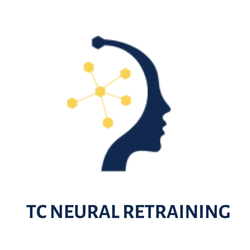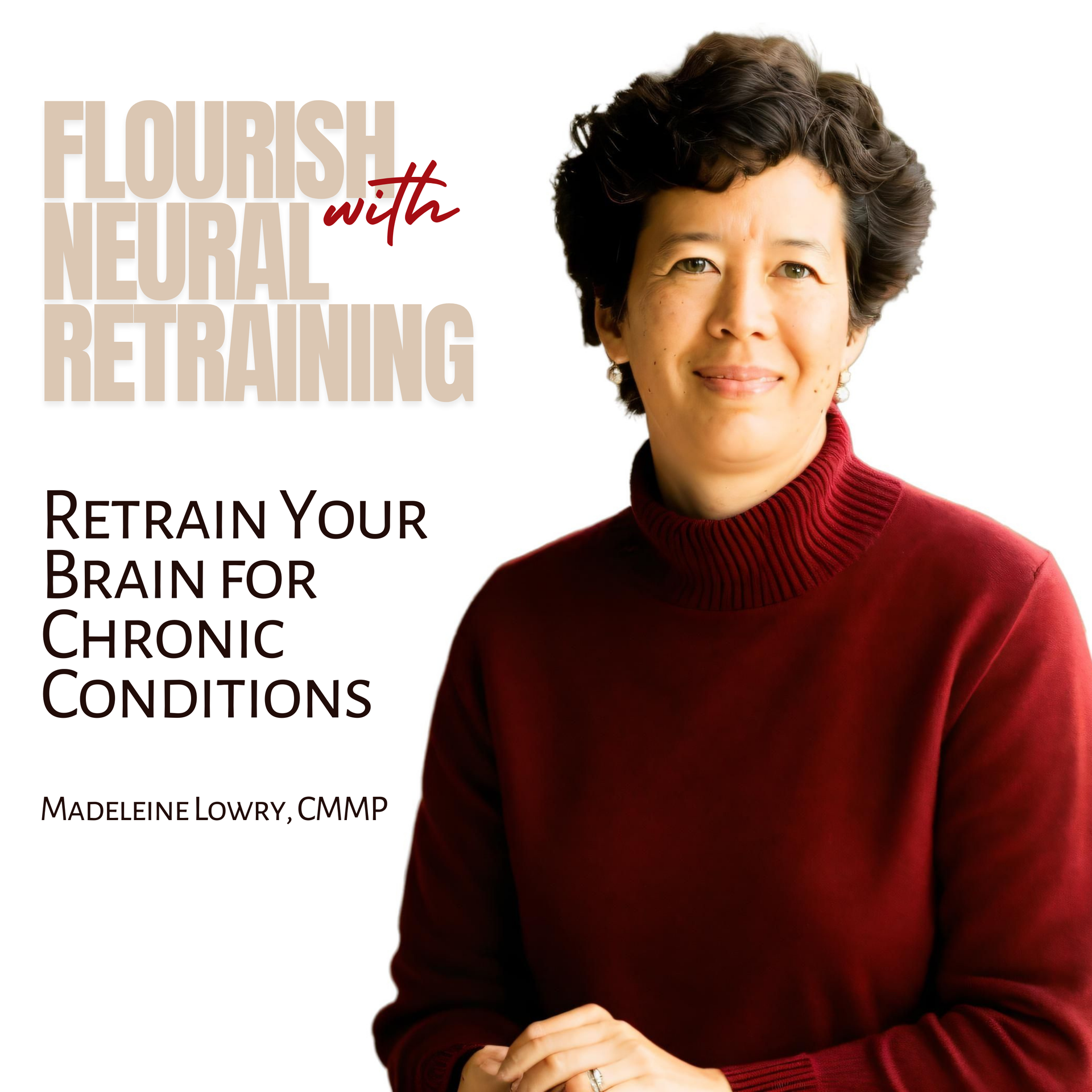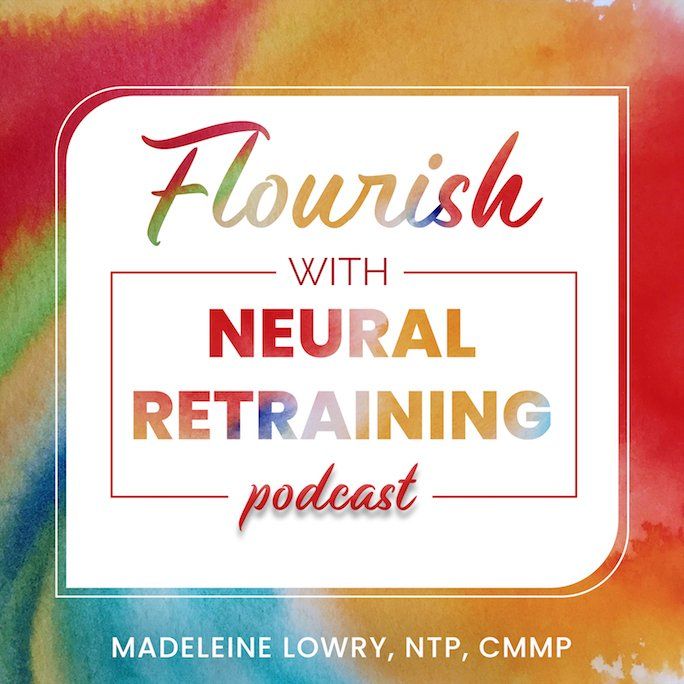Beyond the Sarno Method: Mindbody Healing with Advanced Neural Retraining
Go beyond Dr. Sarno's foundational mind-body insights with an advanced method designed to offer deeper, lasting healing by rewiring your nervous system and addressing the root causes of chronic symptoms. Discover how MAP expands on Sarno's work, by working with the subconscious for comprehensive well-being.

“Overall I have noticed a serious decrease in pain and such empowerment in being able to go out of my house and participate in life in new ways that I’ve avoided in the past because it was so challenging for my body.” -Amy
If you've grappled with chronic symptoms – relentless pain, inexplicable fatigue, or sudden sensitivities – you've likely navigated countless paths in search of answers, diagnostics, and treatments. In the vast landscape of mind-body healing, one name stands out prominently: Dr. John Sarno. His foundational premise – that much chronic physical suffering is not structural but rather emotional, rooted in the mind-body connection – has been a game-changer for tens of thousands.
But what about when the Sarno method is not enough?
To build on Sarno's revolutionary work, we will explore how advanced neural retraining offers a sophisticated, deeper pathway to lasting healing, especially for those who grasp Sarno's ideas but feel there's still a missing piece.
Dr. John Sarno: The Pioneer of Mind-Body Medicine
Dr. Sarno was a true pioneer, dedicating 50 years to NYU's Rusk Institute, where he profoundly shifted the conversation around chronic pain, particularly back pain. His journey began conventionally, embracing Western medicine with standard physical therapy, medications, and even surgery for the first eight to ten years of his practice. However, dissatisfaction with the results led him to a pivotal insight, drawing on his medical training from the 1950s, when psychosomatic roots of illness were still part of the curriculum.
Sarno's "Aha!" Moment: He observed a striking pattern: patients would present with scans with spinal abnormalities, yet many others walked around with identical scan results and zero pain. This crucial disconnect sparked his theory that these "abnormalities" were often just normal variations, not the true cause of pain.
Repressed Emotions and TMS: Sarno concluded that the culprit was often repressed emotions – feelings too painful, inconvenient, or difficult to acknowledge consciously. He theorized that these buried emotions could directly impact our physical state, creating very real pain. It's crucial to understand that Sarno was adamant the pain was 100% real and physically manifesting, caused by mild oxygen deprivation to muscles, nerves, and tendons.
Pain as a Defense Mechanism: He proposed that the brain triggers this pain as a defense mechanism, a distraction. When we suppress powerful, painful emotions like anger, rage, anxiety, or deep sadness, pressure builds. To prevent us from confronting these difficult feelings, the brain creates a physical symptom. This "diversion tactic" was first termed Tension Myositis Syndrome (TMS), later broadened to Tension Myoneural Syndrome, and finally simply Mind Body Syndrome, as its applicability extended far beyond back pain.
The TMS Personality: Sarno identified particular personality types prone to TMS:
• High achievers
• Perfectionists
• People pleasers
These "Goodists" were individuals with a deep-seated need to be perceived as good, responsible, and helpful, often leading them to be overly responsible.
He explained that constantly striving for perfection, prioritizing others, or maintaining a "good" image inevitably leads to suppressing one's own frustrations, anger, resentment, and needs. This creates a hidden reservoir of negative feelings, which the brain then distracts from with physical symptoms.
The Symptom Imperative: A key Sarno observation was the "symptom imperative". If one symptom was successfully treated (e.g., back pain improved), the brain might simply create a new symptom elsewhere – a "whack-a-mole" phenomenon where shoulder pain, headaches, or IBS might flare up. This occurs because the underlying emotional pressure cooker remains unaddressed, so the brain simply shifts its distraction tactic.
Sarno's Treatment Approach: His primary treatment was education and information, helping patients understand the mind-body mechanism. He encouraged lectures, videos, and reading his books. Crucially, he recommended journaling:
• Patients made three lists: childhood experiences/trauma, current life stressors, and personality traits (perfectionism, people-pleasing).
• The goal was to daily choose a topic and write freely, digging beneath surface politeness to uncover deeper emotions, particularly anger and rage.
For many, this understanding and journaling brought significant relief, sometimes just from reading his books alone.
Beyond Sarno: Advanced Neural Retraining (MAP)
While Sarno's contribution is immense and foundational, for some, his methods weren't the final solution. The recognition that 25-30% of people remained stuck despite understanding the concepts and doing the work suggests that deeper work is needed. MAP is a powerful technique for emotional release and trauma healing that works directly with the subconscious mind, often proving more efficient and deeper across a wide range of chronic issues, including pain, fatigue, sensitivities, and anxiety.
With MAP we can take Sarno's method to a new level. Sarno primarily focused on educating the conscious mind about pain as a distraction, whereas MAP is a direct intervention with the subconscious to heal trauma and release emotions.
Shared Foundations: Sarno and MAP
The fundamental agreement between Sarno's work and my work with MAP is important. We both fully embrace the idea that psychological factors, repressed emotions, inner conflicts, and the impact of stress are very often the root causes of chronic conditions. This is Sarno's enduring legacy, and it is congruent with the principles behind MAP.
How MAP Advances Sarno's Insights
While sharing core principles, MAP offers a new approach with and quicker, deeper results.
• Pain as a Signal, Not Just a Distraction: Sarno viewed pain primarily as a distraction. In my work with MAP I see pain less as the brain trying to trick you, and more as a signal from your mindbody system saying, "Hey, pay attention. There's something unresolved here that needs healing". It's a call for help.
• Wider Emotional Scope and Personality Types: Sarno emphasized anger and rage as the root causes for pain symptoms. With MAP we recognizes that any chronically suppressed negative emotion can drive symptoms, including sadness, fear, shame, grief, and pervasive worry or anxiety. My work as a MAP practitioner also expands on Sarno's "goodist" and "perfectionist" personality types to include roles like the caretaker, fixer, savior, nurturer, chameleon and more – all roles that necessitate suppressing one's authentic self, needs, and feelings.
• The Importance of Trauma Healing: Sarno did not particularly focus on trauma. In MAP, trauma healing is absolutely central, especially for early life adverse experiences. These experiences profoundly shape the nervous system's stress response, laying down the blueprint for how one reacts to stress. With a set of MAP sessions we can heal past traumatic events, identify stressors triggering symptom onset, and addresses current life stressors to resolve the stress that is contributing your symptoms.
• Efficiency and Practitioner Guidance: Sarno's approach relied heavily on individual insight and self-directed emotional excavation through journaling. While powerful when successful, not everyone has the time, emotional capacity, or self-awareness for this. MAP sessions are practitioner-guided, and are often described as a smoother, gentler, and almost painless process. It's a meditative method where clients relax with closed eyes, and the practitioner uses specific verbal instructions to work directly with the subconscious mind. The beauty is that clients don't have to consciously know or relive every detail; their subconscious knows where the roots are and rewires itself quickly and easily-- no practicing or journaling needed.
• No Belief Required : Sarno stressed the need to believe that pain had emotional root causes for his method to work. With MAP prior belief is not required; skepticism is expected. The belief develops naturally as clients experience shifts, first emotional, then mental, behavioral and finally physical.
• Rewiring Core Programming: Sarno identified what the pattern of mind-body symptoms was. MAP targets the why and the how – why the system responds this way, and how to rewire neural pathways for lasting change. The goal is to recode subconscious programming, shifting the entire response to stress, making one less likely to generate new symptoms, and changing the habit of repression itself.
• Parts Integration: MAP integrates concepts similar to Internal Family Systems (IFS), recognizing that we all have different aspects of our personality that can have opposing needs (e.g., a part needing rest vs. a part compelled to achieve). MAP helps identify and integrate conflicting parts with the main personality, reducing inner conflict and stress.
• Transforming Personality Traits: Traits like perfectionism or people-pleasing aren't fixed. They are often deeply ingrained subconscious strategies developed in response to past experiences or traumas. MAP sessions can target the underlying subconscious programming so the traits themselves can soften and transform, allowing individuals to become more balanced and prioritize their own needs without guilt or shame.
• Neutralizing Stress Triggers: MAP can specifically target and neutralize reactions to known stress triggers – situations, people, or thoughts that reliably induce anxiety or worry. This is key to stopping the symptom imperative cycle, as diminishing the activation of known stress patterns reduces the likelihood of new symptoms.
• Recognizing Highly Sensitive People (HSPs) A significant number of people with chronic conditions identify as Highly Sensitive People (HSPs), empaths, intuitives, or creative types. For HSPs, painful events, even what others might consider "small-t" traumas, can have a much larger impact on their nervous system. They often feel things more deeply, are more attuned to their environment, and might take on others' emotional burdens more easily, leading to a greater propensity to suppress their own needs and feelings. This creates a "perfect storm" for building up the reservoir of unprocessed emotion and stress Sarno talked about.
The MAP Process and Its Outcomes
The improvements seen with a series of MAP sessions typically unfolds in stages:
• Emotional Shifts: Clients often first feel calmer, less reactive, less anxious, or less triggered day-to-day.
• Mental and Behavioral Changes: Clients often notice a quieting of the mind: fewer obsessive thoughts, worry loops, or inner criticism, and a reduction in compulsive or perfectionistic tendencies.
• Physical Symptoms: Symptom improvement takes longer, with changes in frequency, duration, or intensity sometimes fading gradually, sometimes quickly, as the nervous system shifts out of constant alert.
The ultimate goal is more emotional stability, a quieter mind, less time stuck in fight-flight-freeze, and more time in the parasympathetic "rest, digest, and heal" state – which is crucial for physical recovery. The practitioner acts as a guide, providing verbal instructions, while the client's own subconscious does the processing and rewiring, often instantly. These sessions are done over Zoom making the method accessible to everyone regardless of where you live. MAP is very effective for most, though about 3-5% of the population does not respond to the method and this is often uncovered in the first session.
A New Chapter in MindBody Healing
From Dr. Sarno's paradigm-shifting work, which truly opened our eyes to the power of the mind-body link in chronic pain, we can take the next step to advanced neural retraining methods like MAP. The MAP Method makes it possible to take Sarno's insights to the next level by working directly with the subconscious mind, where all stress patterns live.
I see it everyday in the work I do with clients -- the profound connection between the mind, past experiences, emotions, personality traits, coping mechanisms, and the resulting physical symptoms. For anyone who resonates with Sarno's ideas but wants to go deeper, or wants the guidance of a practitioner, MAP offers a structured, efficient, and deeply personalized way to identify and tackle root causes.
Imagine a life where your emotional resilience is genuinely strengthened, where your body's entire reaction to stress transforms, making you far less vulnerable to the symptom imperative. What could that unlock for your health, your energy, and your overall well-being?
Give MAP a try! It might just change your life.
Learn More
- Watch: How Do We Retrain the Brain for Chronic Pain?
- Read: How Do We Retrain the Brain for Physical Symptoms?
- Watch: How Does Retraining the Brain Resolve Sensitivities?
- Watch the Frequently Asked Questions videos about the MAP Method.
- Listen to client stories about the MAP Method on our podcast.
- Check out our free courses on the MAP Method.


Madeleine Lowry, NTP, CMMP
Certfied MAP Method Practitioner
Madeleine specializes in neural retraining for chronic conditions. As a Nutritional Therapy Practitioner, she worked with many clients who were interested in eliminating allergies, sensitivities and intolerances. After learning a basic method and seeing its limitations, she trained in an advanced method of retraining the brain and now offers MAP sessions over Zoom and online self-paced programs for Anxiety/Depression, Sensitivities, Chronic Pain, Self-Healing, and COVID Long.




